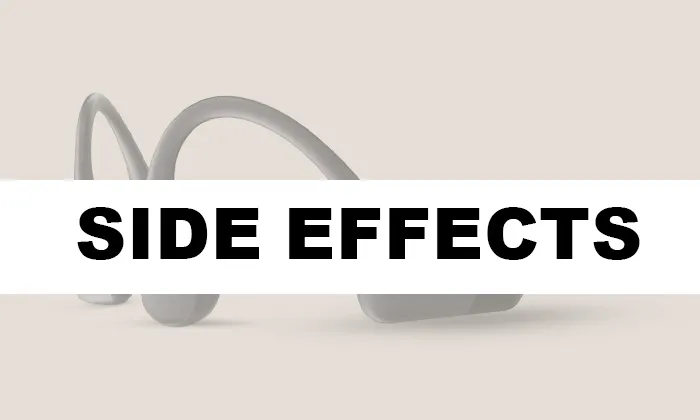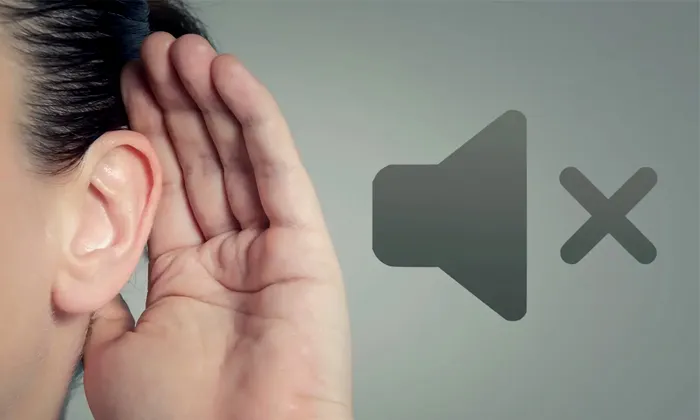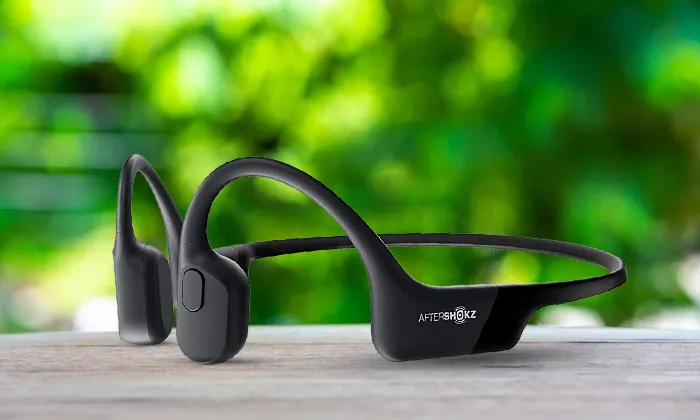In the realm of audio technology, bone-conduction headphones have emerged as an innovative alternative to traditional headphones. Rather than relying on air conduction to deliver sound, bone conduction headphones transmit audio vibrations through the bones of the skull directly to the inner ear.
This unique approach raises questions about their effectiveness, advantages, and disadvantages.
In this comprehensive guide, we will delve into the world of bone-conduction headphones, examining their capabilities and suitability for different users and scenarios.
How Bone Conduction Headphones Work
Bone conduction headphones employ small transducers that generate vibrations. These vibrations are then transferred through the bones of the skull, stimulating the cochlea and enabling the perception of sound. By bypassing the eardrums, bone conduction technology offers an alternative pathway for auditory input.
Are Bone Conduction Headphones Good?
Bone conduction headphones have gained attention for their distinct benefits. They are particularly advantageous for individuals with hearing impairments, as they bypass the eardrums and provide an alternative method of sound transmission.
Additionally, bone conduction headphones allow users to maintain situational awareness since the ears remain uncovered, making them suitable for outdoor activities like running or cycling.

Who Would Benefit from Bone Conduction Headphones?
Bone conduction headphones can be beneficial for various individuals, including those with hearing impairments, individuals with conductive hearing loss, and people who prioritize situational awareness.
Furthermore, athletes and outdoor enthusiasts who need to remain alert to their surroundings can find bone conduction headphones advantageous.
What Are the Advantages of Bone Conduction Headphones?
When it comes to audio technology, bone conduction headphones offer a unique set of advantages that set them apart from traditional headphone designs.
By harnessing the power of bone conduction, these innovative devices provide a range of benefits that cater to different users and scenarios. Here are the Advantages of Bone Conduction Headphones:
Safety and Situational Awareness
Unlike traditional headphones that cover the ears, bone conduction headphones keep the ears open, enabling users to hear ambient sounds such as traffic or conversations while enjoying their audio experience. This feature enhances safety, especially for outdoor activities.
Comfort and Hygiene
Bone conduction headphones are designed to be lightweight and comfortable, making them suitable for extended wear. Since they do not cover the ears, they reduce the risk of discomfort or sweating. Additionally, this design allows for better ventilation, promoting good hygiene.
Hearing Impairment Compatibility
Individuals with certain types of hearing loss, such as conductive hearing loss, can benefit from bone conduction headphones as they transmit sound directly to the inner ear via vibrations. This circumvents any issues related to sound conduction through the ear canal.
Versatility
Bone conduction headphones are suitable for various activities, including sports, outdoor adventures, and even underwater activities. Their open-ear design and resistance to water make them an ideal choice for individuals seeking audio enjoyment in diverse environments.

What Are the Disadvantages of Bone Conduction Headphones?
While bone conduction headphones offer a host of advantages, it is important to consider their potential disadvantages as well. Understanding the limitations of these devices can help users make informed decisions about their suitability for specific situations.
- Sound Quality
- Leakage
- Ambient Noise Interference
Sound Quality
While advancements in bone conduction technology have significantly improved the audio experience, the sound quality of bone conduction headphones may not match that of traditional headphones. Due to the nature of sound transmission through bone conduction, the bass response and overall fidelity can be somewhat compromised.
Leakage
Since bone conduction headphones do not create an airtight seal, there can be some sound leakage. While the leakage is generally minimal, it may be audible to people in close proximity. However, premium models often feature improved sealing mechanisms to minimize this issue.
Ambient Noise Interference
In environments with high ambient noise levels, such as busy city streets or crowded spaces, the clarity of sound transmitted through bone conduction may be affected. The presence of external noise can diminish the listening experience, especially for individuals who prefer immersive audio.
Are Bone Conduction Headphones as Good as Regular Headphones?
Bone conduction headphones serve a unique purpose
and excel in specific scenarios. However, when it comes to overall audio quality and immersive experience, traditional headphones still have the edge.
Traditional headphones provide excellent sound isolation and deliver a more immersive audio experience, making them ideal for critical listening or enjoying music in controlled environments.
On the other hand, bone conduction headphones offer distinct advantages in terms of safety, situational awareness, and compatibility with certain types of hearing loss.
They allow users to stay aware of their surroundings while enjoying audio content, making them suitable for outdoor activities and situations where being attentive to external sounds is crucial.
Bone Conduction vs. Traditional Headphones
Bone conduction headphones and traditional headphones each have their strengths and weaknesses. Traditional headphones provide superior sound isolation, allowing users to focus solely on the audio content without interference from external noise.
They are well-suited for immersive audio experiences, whether it’s listening to music, watching movies, or gaming.
On the other hand, bone-conduction headphones excel in scenarios where situational awareness is vital.
Their open-ear design allows users to hear environmental sounds, making them ideal for outdoor activities, commuting, or situations where being aware of your surroundings is essential for safety.
Additionally, bone conduction headphones offer a comfortable and hygienic alternative, reducing the risk of ear discomfort and sweating during extended use.
How Long Do Bone Conduction Headphones Last?
The lifespan of bone conduction headphones can vary depending on several factors, including the brand, build quality, and usage patterns. On average, bone-conduction headphones can last anywhere from 1 to 3 years with regular use.
It’s important to note that individual experiences may vary. Proper care, such as storing them in a protective case when not in use and avoiding exposure to extreme temperatures or moisture, can help prolong their lifespan.

Can Bone Conduction Damage Hearing?
When used at moderate volume levels, bone conduction headphones are generally considered safe and unlikely to cause damage to hearing. Since they bypass the eardrums and transmit sound through vibrations, the risk of high sound pressure levels directly impacting the eardrums is reduced.
However, it is essential to exercise caution and avoid excessively high volume levels to prevent any potential harm. Responsible usage and adhering to recommended volume guidelines are key to preserving hearing health.
Is Bone Conduction Sound Better?
The sound quality of bone conduction headphones has significantly improved over the years, but it may not match the audio fidelity provided by traditional headphones.
Due to the nature of sound transmission through bone conduction, there may be some limitations in bass response and overall richness of sound.
However, advancements in technology and premium models offer enhanced sound quality, making bone-conduction headphones a viable option for many users.
It’s important to consider your specific audio preferences and requirements when evaluating the sound quality of bone conduction headphones.
Can Other People Hear Bone Conduction Headphones?
One advantage of bone conduction headphones is that they do not completely isolate sound, allowing for some awareness of external noises. Since bone conduction headphones do not cover the ears, there can be minimal sound leakage.
This means that people in close proximity to the user may hear a faint sound or vibrations. The level of sound leakage is generally minimal and not as pronounced as with open-back traditional headphones.
It’s important to be mindful of the volume level and considerate of those around you when using bone conduction headphones in shared spaces.
Verdict
Bone conduction headphones offer a unique listening experience and cater to specific needs and preferences. They excel in situations where situational awareness, comfort, and compatibility with hearing impairments are crucial.
While they may not provide the same level of audio fidelity as traditional headphones, their distinct advantages make them a valuable option for many users. Consider your requirements, priorities, and intended use to make an informed decision about whether bone conduction headphones are the right choice for you.
Related Posts
Are Bone Conduction Headphones Good for Hearing Impaired? If you or someone you know has a hearing impairment, this post provides insights into how bone-conduction headphones can benefit individuals with hearing loss. Read more
Do Bone Conduction Headphones Cause Cancer? Addressing a common concern, this post explores the research and evidence surrounding the potential link between bone-conduction headphones and cancer. Read more
Bone Conduction Headphones Side Effects Understanding the potential side effects of using bone conduction headphones is important. This post delves into the possible drawbacks and precautions to consider. Read more
Can Bone Conduction Headphones Cause Tinnitus? Tinnitus is a common condition characterized by a ringing sensation in the ears. This post examines the relationship between bone conduction headphones and tinnitus. Read more
Can You Wear Bone Conduction Headphones While Sleeping? For those who enjoy falling asleep with headphones, this post explores the feasibility and potential benefits or drawbacks of wearing bone-conduction headphones during sleep. Read more
Remember to click on the links to explore these related posts and gain more in-depth knowledge about specific aspects of bone-conduction headphones.
- Charging Bluetooth Headphones During Use: Is It Possible? - January 9, 2024
- Why Over-Ear Headphones Best for Hearing Health? (7 Reasons) - December 12, 2023
- Fixing the Bose Earbuds Not Charging in Case Problem: Solutions That Work - November 24, 2023
